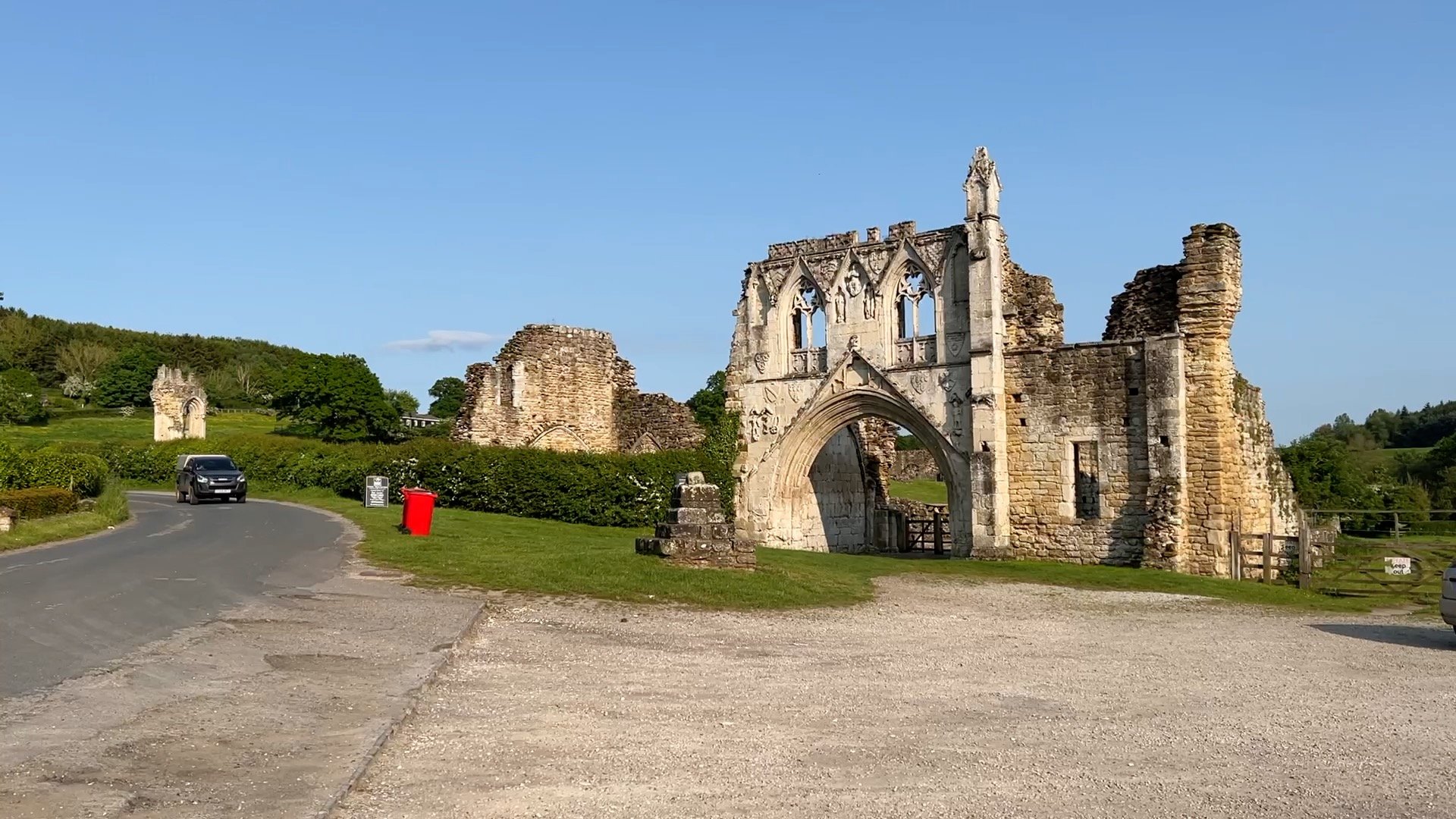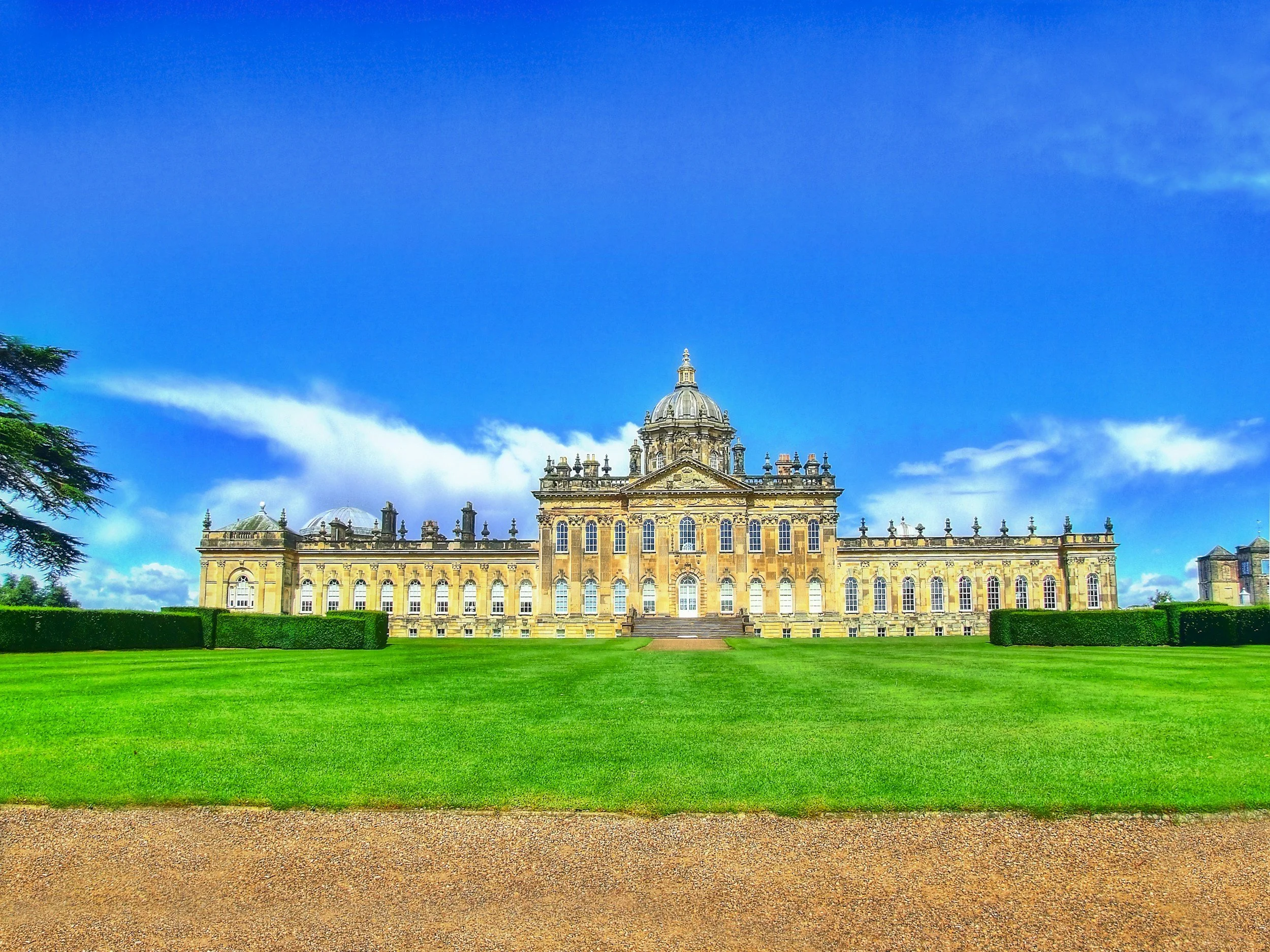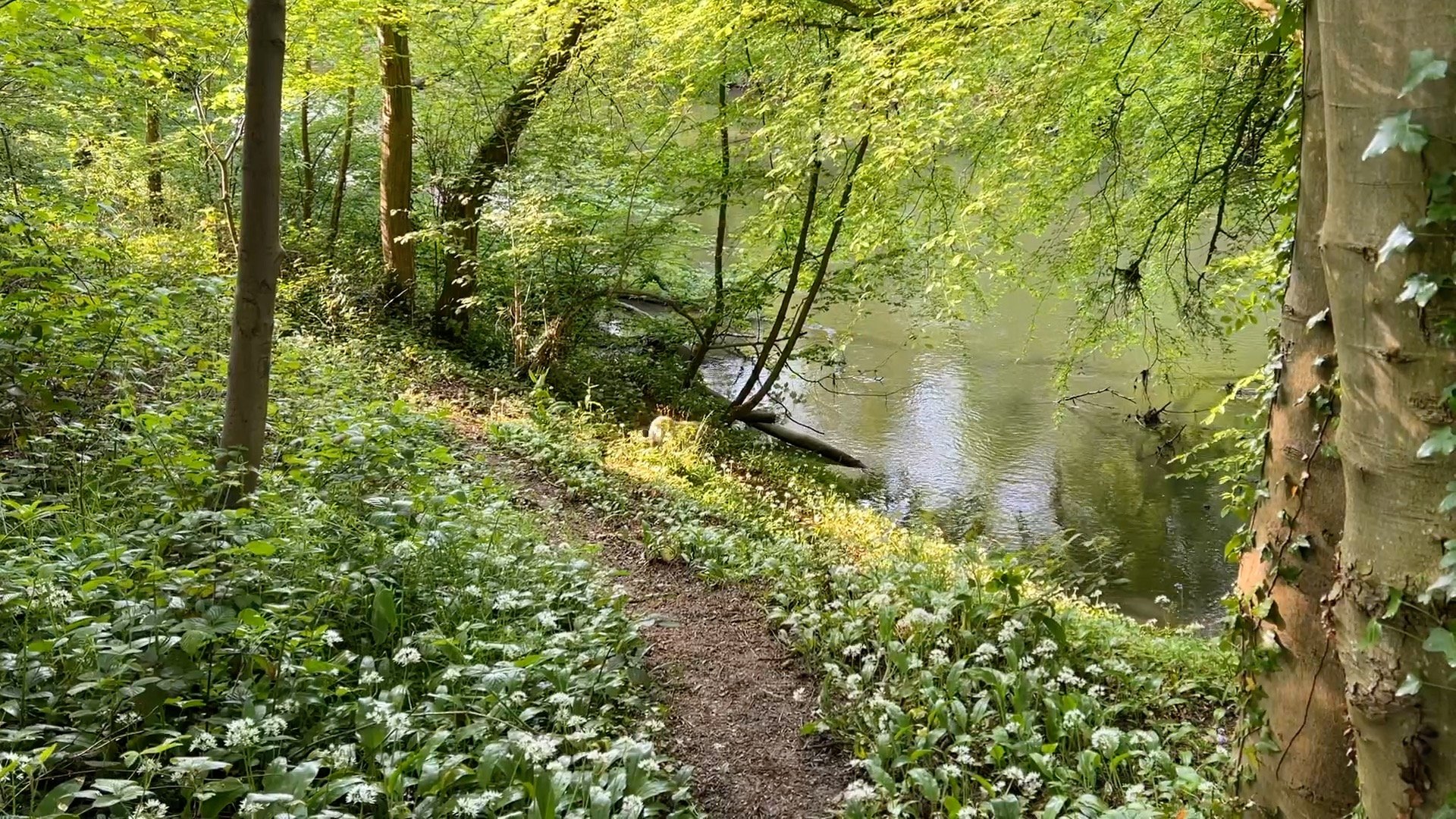
Places to Visit in Kirkham Abbey
Kirkham Abbey in North Yorkshire, England, was built in 1122 by Walter l'Espec for the Augustinian canons. It served as a priory until 1539 when Henry VIII dissolved it. The abbey, next to the River Derwent, features attractive ruins with impressive medieval architecture, like the gatehouse. English Heritage now oversees Kirkham Abbey, welcoming visitors to explore its history.
Places to Visit in Kirkham Abbey North Yorkshire
-

Kirkham Abbey
Kirkham Abbey is a picturesque ruin located in North Yorkshire, England. Founded in 1122 by Walter Espec, it was originally an Augustinian priory dedicated to the Virgin Mary. The abbey is nestled along the banks of the River Derwent, near the village of Kirkham, offering visitors a serene and scenic setting.
Despite its dissolution in 1539 during the reign of Henry VIII, much of the priory's architecture remains, including the impressive 13th-century gatehouse, remnants of the priory church, and other monastic buildings. Managed by English Heritage, Kirkham Abbey provides a fascinating glimpse into medieval monastic life through its well-preserved ruins and informative displays.
Visitors can explore the ruins, enjoy the natural beauty of the surrounding countryside, and learn about the abbey's history and significance in English heritage. The site is dog-friendly and offers various amenities to enhance the visitor experience, though it presents some accessibility challenges due to its uneven terrain.
-

Castle Howard
Castle Howard is a magnificent stately home located in North Yorkshire, England. Built between 1699 and 1712 for the 3rd Earl of Carlisle, it is one of the grandest private residences in Britain. Designed by Sir John Vanbrugh, Castle Howard is renowned for its stunning Baroque architecture, expansive landscaped gardens, and opulent interiors.
The iconic central dome and elaborate façade are standout elements of the building's Baroque design. Inside, visitors can explore lavish rooms filled with antique furniture, fine art, and intricate decorative details. The 1,000-acre estate boasts formal gardens, lakes, fountains, woodland, and a walled garden, offering picturesque views and tranquil walks. Notable structures within the grounds include the Temple of the Four Winds and the family mausoleum, both adding to the estate's architectural splendor.
Castle Howard has been featured in various films and television series, most famously in "Brideshead Revisited." It remains a popular tourist destination, offering guided tours, exhibitions, and a variety of seasonal events.
-

Centenary Way Walking Trail
Centenary Way Walking Trail is a route that begins in York and sojourns through the Howardian Hills and Yorkshire Wolds and finishes at Filey.
Granted you wouldn’t walk all this route in one day, but you can walk along a section of this route as far as you like.
From Kirkham Abbey, you can follow the River Derwent and the route is very scenic and you can discover a plethora of plant and animal life. You will also see the former private school at Howsham too.
Just be sure to wear clothes fitting for the weather and take food and drink with you!
Kirkham Abbey FAQs
-
Kirkham Abbey, located in North Yorkshire, England, is a historic site with a rich past. Here are some key points about its history and significance:
Founding and Early History
Founded: Kirkham Priory was founded in 1122 by Walter Espec, a prominent landowner and advisor to King Henry I.
Order: It was an Augustinian priory, meaning it followed the Rule of St. Augustine and was part of the broader Augustinian Order.
Dedication: The priory was dedicated to the Virgin Mary.
Architectural Features
Style: The architecture of Kirkham Priory is a mix of Romanesque and Gothic styles, typical of monastic buildings from the medieval period.
Ruins: The site today is in ruins, but significant portions of the priory church, the gatehouse, and other buildings remain, providing a glimpse into its past grandeur.
Historical Significance
Religious and Social Role: As a priory, Kirkham was a center of religious life and local social support, providing spiritual services, education, and aid to the needy.
Dissolution: The priory was dissolved in 1539 during the Dissolution of the Monasteries under King Henry VIII. This led to its decline and eventual ruin.
Modern Era
Preservation: The site is now managed by English Heritage, which ensures its preservation and makes it accessible to the public.
Tourism: Kirkham Abbey is a popular tourist destination, offering visitors insights into medieval monastic life and stunning views of the surrounding countryside.
Notable Features
Gatehouse: One of the most striking features is the 13th-century gatehouse, which remains well-preserved.
River Derwent: The priory is situated near the River Derwent, adding to its scenic beauty.
Kirkham Abbey offers a fascinating window into England's monastic past and remains a site of historical and architectural interest.
-
Kirkham Abbey is located in North Yorkshire, England. Specifically, it is situated near the village of Kirkham in the Ryedale district. The abbey lies on the eastern bank of the River Derwent, approximately:
5 miles (8 km) south of Malton
10 miles (16 km) east of York
Close to the A64 road, which connects Leeds, York, and Scarborough, making it accessible for visitors traveling by car.
The surrounding area is known for its picturesque countryside, with the abbey ruins set in a serene and scenic location that attracts both history enthusiasts and nature lovers.
-
Kirkham Abbey offers several attractions that draw visitors interested in history, architecture, and natural beauty. Here are some of the most popular features of Kirkham Abbey:
1. Gatehouse
Description: The 13th-century gatehouse is one of the most well-preserved and striking structures at the site. It provides an impressive example of medieval architecture and offers insights into the priory's original layout and defensive features.
2. Ruins of the Priory Church
Description: The remnants of the priory church showcase Romanesque and Gothic architectural elements. Visitors can explore the nave, transepts, and chancel, gaining a sense of the church's size and grandeur during its peak.
3. Chapter House
Description: The chapter house, where the monks held daily meetings, remains partially intact. It provides a glimpse into the administrative life of the priory.
4. Refectory
Description: The refectory, where the monks dined, is another notable ruin. Its layout and surviving elements help illustrate the daily life and communal activities of the Augustinian monks.
5. Scenic Location
Description: Situated on the banks of the River Derwent, the abbey is surrounded by beautiful countryside. The scenic views and peaceful environment enhance the visitor experience, making it a great spot for picnics and leisurely walks.
6. Information Boards and Exhibits
Description: English Heritage has provided informative displays and boards throughout the site, offering historical context and details about the life of the monks, the architecture, and the dissolution of the priory.
7. Wildlife and Nature
Description: The abbey's grounds are home to various flora and fauna, making it a lovely spot for nature enthusiasts. The combination of historical ruins and natural beauty creates a unique and serene atmosphere.
8. Nearby Walking Trails
Description: There are several walking trails in the vicinity of Kirkham Abbey, including routes that follow the River Derwent. These trails offer opportunities for further exploration of the picturesque North Yorkshire countryside.
9. Photography Opportunities
Description: The picturesque ruins and scenic location make Kirkham Abbey a popular spot for photography. Visitors often capture images of the atmospheric ruins against the backdrop of rolling hills and the river.
10. Events and Activities
Description: English Heritage occasionally hosts events, guided tours, and educational activities at Kirkham Abbey, providing additional ways for visitors to engage with the site's history and significance.
These attractions make Kirkham Abbey a compelling destination for those interested in medieval history, architecture, and the natural beauty of North Yorkshire.
-
Yes, Kirkham Abbey is dog-friendly. Visitors are welcome to bring their dogs, provided they are kept on a leash and under control at all times. Here are a few tips for visiting Kirkham Abbey with your dog:
Tips for Visiting Kirkham Abbey with a Dog
Leash Requirement: Dogs must be kept on a leash at all times to ensure the safety of other visitors, wildlife, and the preservation of the historic site.
Waste Disposal: Be sure to clean up after your dog and dispose of waste properly. There are usually waste bins available on-site for convenience.
Water and Shade: Bring water for your dog, especially on hot days, as there may be limited access to water sources. The abbey grounds offer some shaded areas where you and your dog can take a break.
Respect Other Visitors: Ensure your dog is well-behaved around other visitors and animals, maintaining a peaceful environment for everyone.
Explore the Surroundings: Take advantage of the nearby walking trails along the River Derwent and the surrounding countryside, which offer additional scenic routes for you and your dog to enjoy.
By following these guidelines, you can have a pleasant and enjoyable visit to Kirkham Abbey with your furry companion.
-
Kirkham Abbey presents some challenges for visitors with poor mobility due to its historic nature and the uneven terrain of the ruins. However, certain measures are in place to help make the site more accessible:
Accessibility Considerations
Pathways and Terrain
The abbey ruins are situated on uneven ground, which includes grass, gravel paths, and some slopes. This can make navigating the site difficult for those with limited mobility or who use wheelchairs.
Parking
There is a parking area near the entrance of the site. Check with English Heritage for designated accessible parking spaces or the closest drop-off points to minimize walking distances.
Entrance and Facilities
The main entrance may have some steps or uneven surfaces, which can be challenging. Contacting the site beforehand can provide specific information on the accessibility of entrances and facilities.
Assistance
It may be beneficial to visit with a companion who can provide assistance if needed. Staff at English Heritage sites are typically helpful and may be able to offer support or advice for navigating the site.
Information Boards
Information boards and exhibits are placed throughout the site, providing historical context. Some of these may be at heights that are accessible for those using wheelchairs or with limited mobility.
Virtual Resources
If physical access is too challenging, checking if English Heritage offers virtual tours or detailed online information about Kirkham Abbey can be a good alternative.
Recommendations
Contact Ahead: Before visiting, it's advisable to contact Kirkham Abbey or English Heritage directly to inquire about specific accessibility features, recent improvements, or any special arrangements that can be made.
Footwear and Equipment: Wear suitable footwear for uneven ground and consider using mobility aids like canes or walkers with wheels designed for outdoor use.
By planning ahead and taking these considerations into account, visitors with poor mobility can better enjoy their experience at Kirkham Abbey.
Our Review of Kirkham Abbey Based on Our Visit
Kirkham Abbey is a beauty spot so any attractions other than the serenity of the area is limited. Having said this, Castle Howard is a short drive away from Kirkham Abbey.
Kirkham Abbey itself is open to the public and maintained by English Heritage. During the summer, people enjoy congregating to have a picnic. There is a walk beside the River Derwent taking along the river bank towards Howsham. This is a very scenic walk in the Howardian Hills although the trail is flat following the River Derwent. It is enjoyable to see Kirkham Abbey reflected in the smooth waters of the Derwent.
As far as food and drinks is concerned, The Stone Trough Public House is fantastic and you can sit outside where you can enjoy views of Kirkham Abbey and the River Derwent. So unless you want to eat at the pub, it is highly recommended to bring food and drink with you.
There is a small car park that is free to use in Kirkham Abbey but spaces can be limited.
It is a fantastic place to take your dog for a walk owing to the Centenary Way beside the Derwent. Obviously, do be careful when walking beside the river, and we should mention that sometimes the wooded area of the walk can get somewhat muddy and therefore slippy underfoot. Another safety tip is to be careful on the narrow lane running through the area especially on the stone bridge.
As far as the scenery and the abbey is concerned, what a wonderful place this is! The grass is lush, the sky can be blue at times and the Derwent is super reflective on a sunny day. The views are amazing, a gemstone in the Howardian Hills. It’s hard not to love!
Getting to Kirkham Abbey in North Yorkshire
-
By Car
From York: Take the A64 road heading east towards Malton. Look for signs directing you to the village of Kirkham. The abbey is located just off the A64.
From Malton: Head south on the B1248 road towards York. Turn off towards Kirkham when you see signs for the village and abbey.
Parking: There is a parking area near the entrance of Kirkham Abbey.
-
Although there are no buses running through Kirkham Abbey, the location is very close to the A64. Therefore, you can board either a Coastliner 840 or 843 from Leeds, Tadcaster, York, Malton, Scarborough, Pickering, Whitby and alight at Whitwell on the Hill. Follow the signs to Kirkham Abbey which is a short walk away.
Please be very very careful when crossing the A64 and use the dedicated crossing area.
-
The closest railway station is at Malton not far away from Kirkham Abbey. However, it does require connecting with a Coastliner Bus 840/843 south, alighting at Whitwell On the Hill.
Ironically, the York to Scarborough Line runs through Kirkham Abbey but the station closed a long time ago!


















